In the heart of the United States, Missouri beckons with a captivating array of owl species, each adding a touch of mystique to the state’s diverse ecosystems.
Home to eight distinct owl species, Missouri’s woodlands, parks, and sanctuaries offer a remarkable opportunity for bird enthusiasts and nature lovers to witness these nocturnal hunters’ silent flight and haunting calls.
From the iconic Great Horned Owl to the elusive Long-eared Owl, the Show-Me State provides a haven for both common and rare owl species.
This journey through the woods and open landscapes of Missouri promises an intimate encounter with these enigmatic creatures, unveiling their unique characteristics and their vital roles in maintaining the ecological balance of this Midwest haven.
Join us as we explore the fascinating world of eight owls that call Missouri home. So, stay focused.
8 Owls in Missouri
Jump on a feathered journey through Missouri’s diverse avian landscape, where a symphony of wings and calls fills the air.
From the iconic Barred Owl to the elusive Long-eared Owl, explore these captivating birds’ unique characteristics, habitats, and lifestyles that grace the skies.
1. Barn Owl
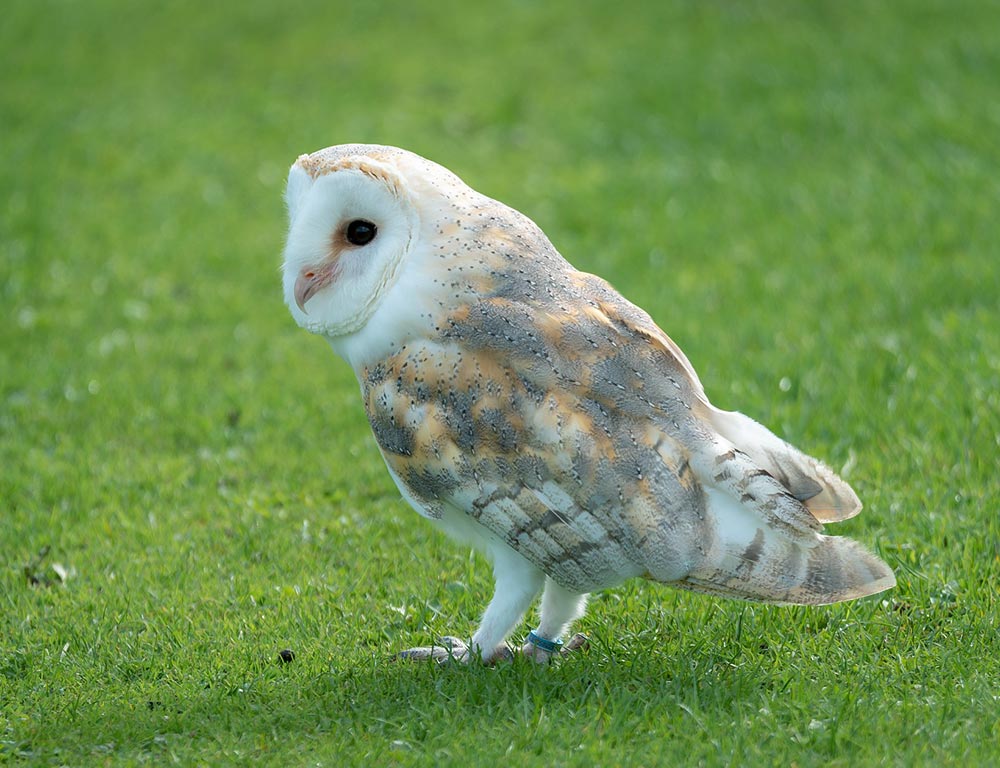
- Scientific name: Tyto alba
- Population: Stable, widespread in Missouri
- Life span: 4-5 years in the wild
- Size: Medium-sized owl, 12-15 inches tall
- Weight: 1-1.5 pounds
- Food: Mainly small mammals like rodents, birds, and insects
- Wingspan: 3.3 to 4 feet
- Status: Common in suitable habitats
With its distinctive heart-shaped face, the Barn Owl is a nocturnal hunter that relies on its exceptional hearing to locate prey.
They are well-adapted to rural environments and often nest in barns, abandoned buildings, and tree cavities. Barn Owls are crucial in controlling rodent populations, making them beneficial to farmers.
Their silent flight allows them to approach prey stealthily, and they consume a diverse diet that includes rats, mice, and other small creatures.
2. Great Horned Owl
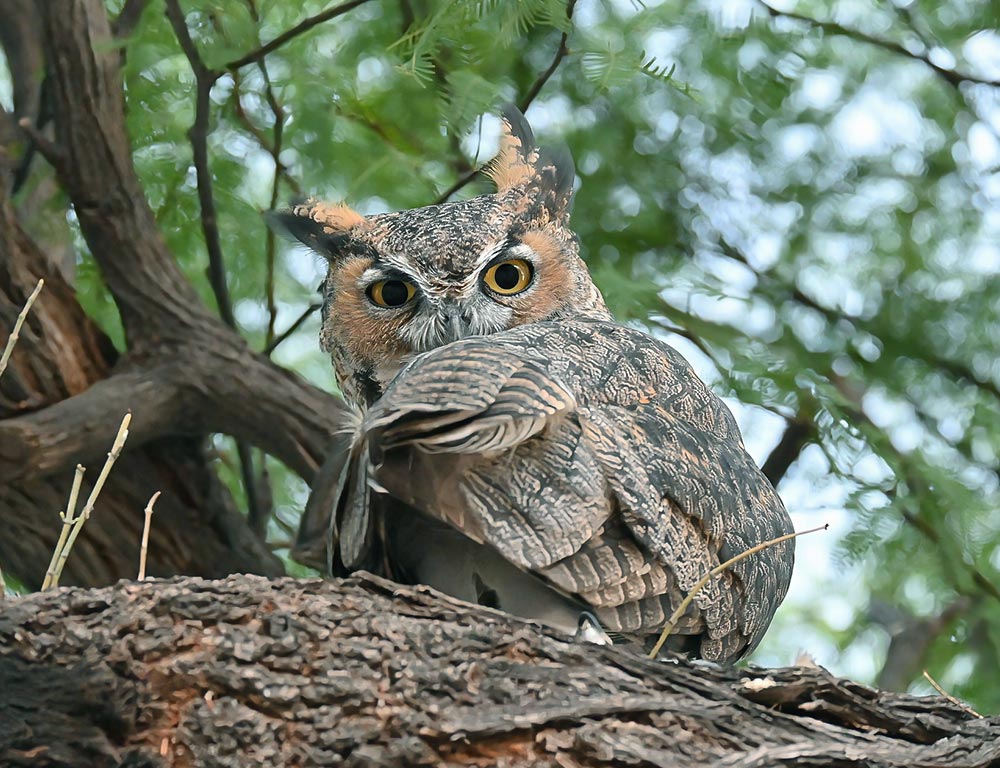
- Scientific name: Bubo virginianus
- Population: Abundant and widespread
- Life span: 10-15 years in the wild
- Size: Large owl, 18-25 inches tall
- Weight: 2-5.5 pounds
- Food: Varied diet, including mammals, birds, and reptiles
- Wingspan: 3.3 to 4.8 feet
- Status: Common throughout Missouri
As one of the most adaptable and widely distributed owls, the Great Horned Owl is known for its distinct tufted “horns” on its head.
These powerful predators are skilled hunters capable of capturing prey as diverse as rabbits, skunks, and even other raptors.
Great Horned Owls often nest in trees and can be found in various habitats, from forests to urban areas. Their ability to thrive in various environments makes them a resilient and successful species.
3. Eastern Screech Owl
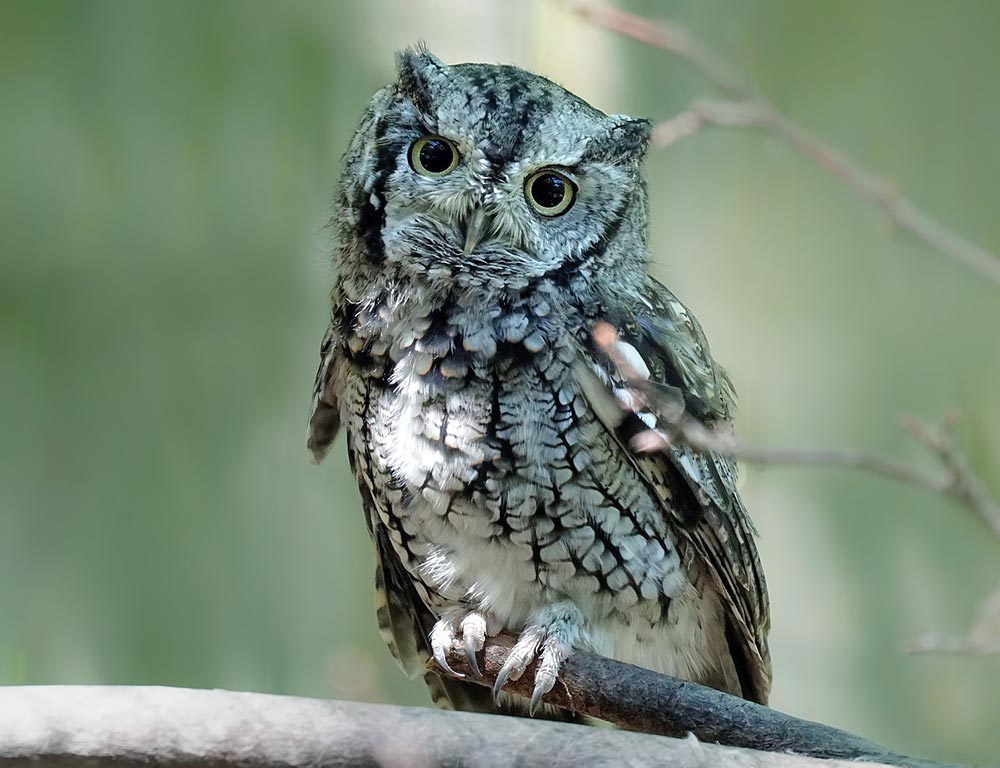
- Scientific name: Megascops asio
- Population: Common in suitable habitats
- Life span: 6-8 years in the wild
- Size: Small to medium-sized owl, 7-10 inches tall
- Weight: 4-8 ounces
- Food: Primarily insects, small mammals, and birds
- Wingspan: 1.5 to 2 feet
- Status: Stable, common in Missouri
With its cryptic plumage and small size, the Eastern Screech Owl is well-camouflaged in its woodland habitats.
They are primarily nocturnal and have a distinctive trill or whinny call. Eastern Screech Owls are cavity nesters, often utilizing abandoned woodpecker holes or nest boxes.
Despite their small size, they are effective hunters, preying on insects, small mammals, and birds. Their adaptability allows them to thrive in urban and rural environments, making them familiar in many parts of Missouri.
4. Barred Owl
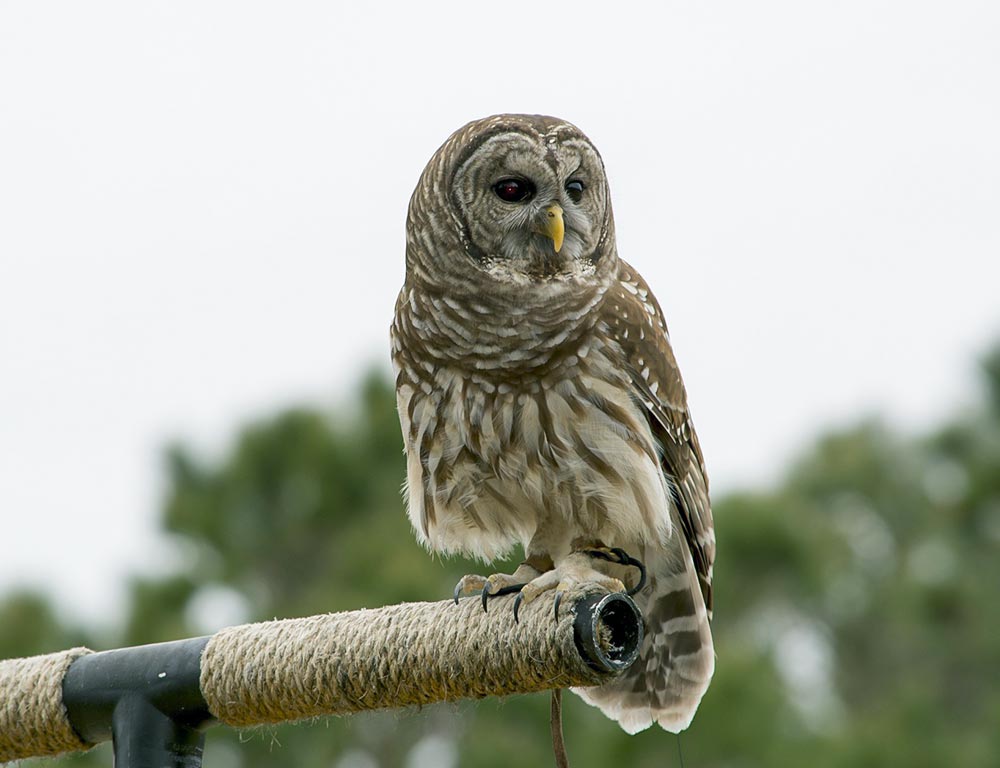
- Scientific name: Strix varia
- Population: Common in wooded areas
- Life span: 10-15 years in the wild
- Size: Medium to large owl, 16-25 inches tall
- Weight: 1.5-2.3 pounds
- Food: Mainly small mammals, birds, amphibians, and invertebrates
- Wingspan: 3.2 to 3.6 feet
- Status: Stable population in Missouri
Recognizable by its distinctive hooting call, the Barred Owl is a versatile hunter found in wooded habitats across Missouri. Its adaptability allows it to inhabit both mature and second-growth forests.
Barred Owls are skilled at catching prey on the wing and are known for consuming various animals, including rodents, birds, and even small mammals.
They are also effective hunters in low light conditions, making them well-suited for the crepuscular and nocturnal lifestyle.
5. Snowy Owl

- Scientific name: Bubo scandiacus
- Population: Rare winter visitors in Missouri
- Life span: 9-10 years in the wild
- Size: Large owl, 20-28 inches tall
- Weight: 3-6.6 pounds
- Food: Mainly lemmings and other small mammals
- Wingspan: 4.2 to 4.8 feet
- Status: Nomadic, occasional winter sightings in Missouri
The Snowy Owl is a majestic bird that attracts attention with its stunning white plumage. While not a permanent resident in Missouri, it occasionally migrates to the region during the winter.
Snowy Owls primarily inhabit Arctic tundra but venture south during irruption years in search of food. They are exceptional hunters, relying on their keen vision to spot prey from a distance.
Their diet mainly consists of lemmings, but they may also consume birds and other small mammals during their winter visits.
6. Northern Saw-whet Owl

- Scientific name: Aegolius acadicus
- Population: Resident, but secretive and seldom seen
- Life span: 3-7 years in the wild
- Size: Small owl, 7-8 inches tall
- Weight: 2.5-5.3 ounces
- Food: Primarily small mammals and insects
- Wingspan: 1.8 to 2 feet
- Status: Stable population in Missouri
The Northern Saw-whet Owl is a diminutive and elusive owl that resides in dense coniferous and mixed forests. Despite their small size, they are effective hunters, preying on small mammals like mice and voles.
Saw-whet Owls are known for their distinctive “toot-toot-toot” call during the breeding season. They nest in tree cavities or use abandoned nests of other birds.
Their cryptic plumage and secretive nature make them challenging to observe, adding an air of mystery to their presence in the Missouri woodlands.
7. Short-eared Owl

- Scientific name: Asio flammeus
- Population: Varies, with fluctuations in rodent populations
- Life span: 4-7 years in the wild
- Size: Medium-sized owl, 13-17 inches tall
- Weight: 7.3-16.8 ounces
- Food: Mainly small mammals, especially rodents
- Wingspan: 2.9 to 3.5 feet
- Status: Irregular visitor to Missouri, more common during winter
Short-eared Owls are known for their distinctive facial disk and short tufts of feathers resembling “ears.”
These owls prefer open habitats like grasslands, marshes, and fields. Unlike many owls, they are diurnal and can often be seen hunting during daylight hours.
Their preferred prey includes rodents, and they are excellent fliers, using a buoyant, moth-like flight to cover large areas in search of food. Short-eared Owls are known for their communal roosting behavior, gathering in groups during the non-breeding season.
8. Long-eared Owl
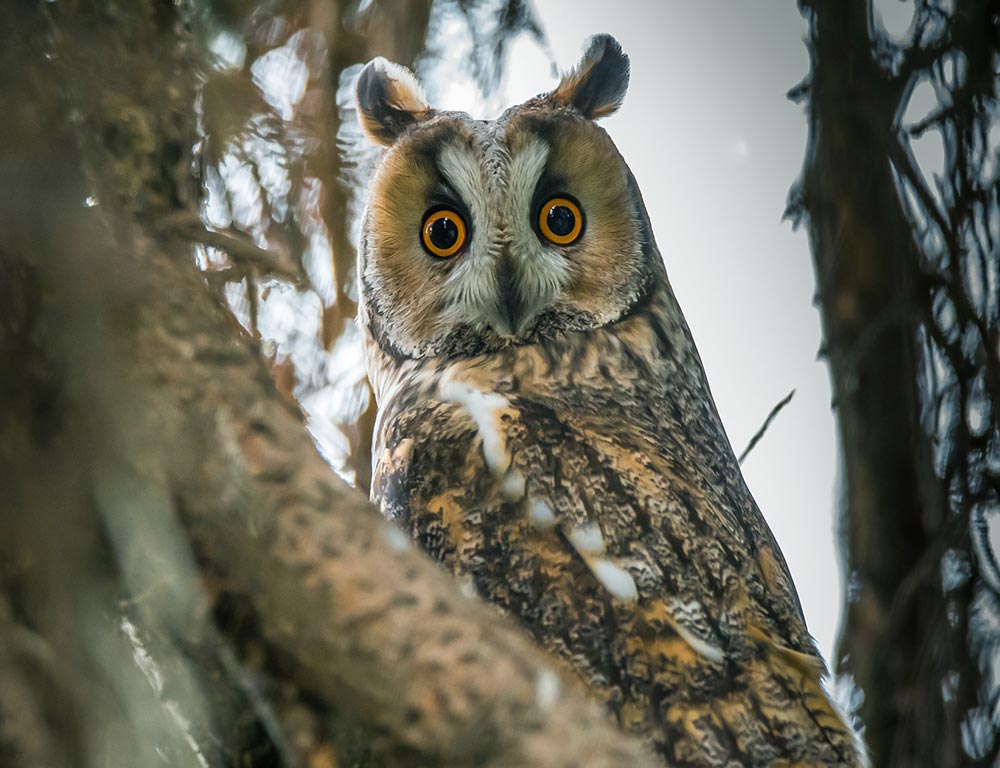
- Scientific name: Asio otus
- Population: Localized, prefers dense coniferous or deciduous forests
- Life span: 4-10 years in the wild
- Size: Medium-sized owl, 13-16 inches tall
- Weight: 7.8-15.3 ounces
- Food: Primarily small mammals, occasionally birds
- Wingspan: 3.2 to 3.6 feet
- Status: Resident, but not as easily observed due to nocturnal habits
Long-eared Owls are characterized by their long, slender “ear” tufts, which are often held erect. These owls are secretive and well-camouflaged, favoring dense woodlands for nesting and roosting.
They are primarily nocturnal hunters, preying on small mammals like voles and mice. Long-eared Owls have a more limited distribution than other owl species, and their elusive nature makes them challenging to observe.
They tend to roost in dense vegetation during the day, relying on their cryptic plumage to remain hidden from potential predators.
Where Are the Best Places in Missouri to Spot Owls?
Missouri’s rich biodiversity offers owl enthusiasts an exciting opportunity to witness these mysterious nocturnal hunters.
From dense woodlands to open grasslands, the Show-Me State harbors diverse habitats perfect for owl sightings.
Discover the best places to spot these captivating creatures as we unveil the top locations for owl-watching in Missouri.
Mark Twain National Forest
Nestled in the Ozarks, the Mark Twain National Forest provides a haven for owls like the Barred Owl and Eastern Screech Owl. Explore the forested trails and listen for their distinctive calls echoing through the trees.
Squaw Creek National Wildlife Refuge
A renowned birding destination, Squaw Creek is a winter home to the Snowy Owl.
Its expansive wetlands attract a variety of owl species, offering birdwatchers a chance to observe these magnificent creatures in a natural setting.
Ha Ha Tonka State Park
This park, characterized by rugged terrain and scenic overlooks, is a habitat for the elusive Long-eared Owl. Patient observers may glimpse these owls in the park’s wooded areas, particularly during the nesting season.
Riverlands Migratory Bird Sanctuary
Located along the Mississippi River, this sanctuary is a hotspot for owls like the Short-eared Owl. Its diverse ecosystems, including grasslands and wetlands, provide an ideal environment for spotting these diurnal hunters.
Rock Bridge Memorial State Park
In the heart of Missouri, this park offers a chance to encounter the Great Horned Owl. Explore the park’s diverse landscapes, from caves to woodlands, where these adaptable owls may be nesting and hunting.
Big Oak Tree State Park
Known for its ancient trees, this park is a potential habitat for the Barn Owl. The open fields and unique landscapes allow these nocturnal hunters to glide through the night sky silently.
Embrace the serenity of Missouri’s natural wonders as you venture into these owl-rich habitats, each promising an enchanting glimpse into the world of these captivating birds.
Wrapping Up
As twilight falls over Missouri’s diverse landscapes, the enchanting realm of owls comes to life.
From the haunting calls of the Barred Owl in Mark Twain National Forest to the elusive Long-eared Owl in Ha Ha Tonka State Park, the Show-Me State unveils a tapestry of winged wonders.
Whether you explore the vast expanses of Squaw Creek National Wildlife Refuge or the ancient groves of Big Oak Tree State Park, each location offers a unique window into the mysterious world of these nocturnal hunters.
As the moonlight casts its glow on these remarkable birds, the echoes of their calls linger in the hearts of those fortunate enough to witness their beauty.
Missouri’s owl-rich landscapes invite all nature enthusiasts to embrace the magic of the night and connect with the captivating stories written in the silent flight of these feathered inhabitants. Best of luck.